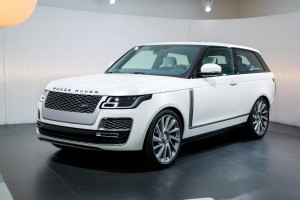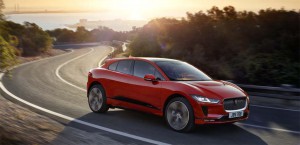
Ralf Speth, Jaguar president, touted the company's full-year sales set a new record, driven by a 19% increase in China.
Jaguar Land Rover reported its annual pre-tax profits fell to 1.5 billion pounds, or $2 billion, from 1.6 billion pounds the year before, and fourth quarter profits during the January to March period was almost cut in half from 676 million pounds, or $905.3 million, to 364 million pounds.
The drop in profits during January to March period was affected by the higher charges in its vehicle development program and the drop in sales of diesel-powered vehicles. But the company said its annual pre-tax profit was boosted a 437-million-pound, or $585.2 million, credit from its pension scheme in the first quarter of the year.
The automaker, which was re-organized 10 years ago after Ford Motor Co. sold it to Tata, the Indian industrial conglomerate, noted that “consumer uncertainty surrounding diesel models, Brexit and vehicle taxation” hurt sales in the United Kingdom.
The fallout from the ongoing diesel controversy that started at Volkswagen AG impacted Jaguar Land Rover’s bottom line despite the fact that unlike its counterparts at Volkswagen, Daimler AG and Fiat Chrysler Automobiles N.V. Jaguar Land Rover is not under suspicion of cheating on emission tests.
(Sagging diesel sales pushes Jaguar Land Rover to lay off 1K workers. Click Here for the story.)
Traditionally, diesel vehicles have been widely used as company cars by executive and managers in the United Kingdom and Jaguar and Land Rover are among the preferred brands when the perquisite is employed.
The company, which is heavily reliant on diesel sales in UK and Europe, has been hit by the political backlash against the fuel that has seen some cities consider banning older diesel engines and governments increase taxes.
In the UK, diesel sales currently account for less than a third of new car sales, compared with more than half four years ago, and new taxes that came into force last month are expected to accelerate the decline.
JLR blamed the diesel collapse for a decision last month to cut 1,000 jobs at its British factories. Although JLR is the first mainstream premium brand to develop a long-range fully-electric sport utility vehicle with the Jaguar I-Pace, the company lags behind its German rivals in offering electric alternatives across a range of its products, commentators in the British press noted.
(Click Here for more about Land Rover bringing back the two-door with the SV Coupe.)

Range Rover is back with its two-door, 565-horsepower ute that debuted at the 2018 Geneva Motor Show.
JLR’s annual sales grew 1.7% during the full fiscal year end March 31, thanks to a 19% increase in sales by in China. UK sales dropped 12.8% to 108,759 cars during the fiscal year, while European sales also fell.
The company higher spending also cut into the margins, which fell from 5.9% to 3.8%, largely because as the group tried to keep pace with larger rivals in developing electric and self-driving systems.
“Despite external headwinds, these results reflect the underlying strengths of Jaguar Land Rover. “Sales have reached a new high. Strong demand in our key overseas markets has offset the challenging conditions in the UK and other parts of Europe,” JLR CEO Ralf Speth said.
The company spent 4.2 billion pounds, or $5.6 billion, on technology and investment last year compared with £3.4bn a year earlier. The spending also went on improving its UK facilities, and building a new plant in Slovakia to produce Land Rover models outside Britain in the future.
(To see more about Jaguar’s debut of the I-Pace e-SUV, Click Here.)
Overall, JLR’s annual revenues rose 6% to 25.8 billion pounds, driven by a large rise in orders to China, its fastest growing region. While demand in China rose by a fifth, and North American sales climbed 4.7%, domestic sales fell 12.8% while Europe dropped 5.3%.

